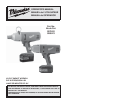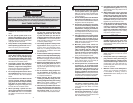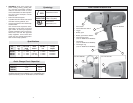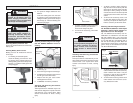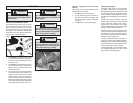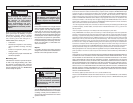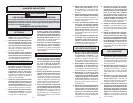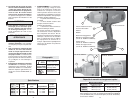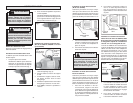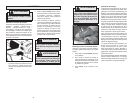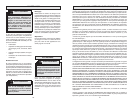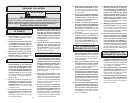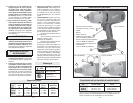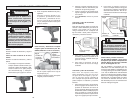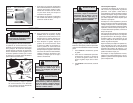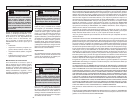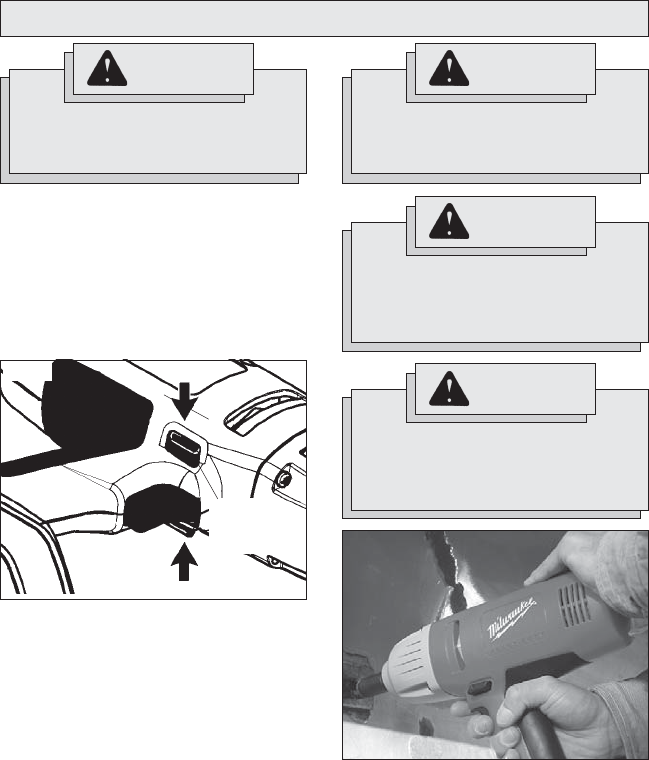
8 9
OPERATION
WARNING
When tool is not in use, lock trigger to
prevent the tool from being acciden-
tally turned on.
Using the Forward/Reverse Switch
The forward/reverse switch may be set to
three positions: forward, reverse and lock.
Due to a lockout mechanism, the forward/
reverse switch can only be adjusted when
the trigger is not depressed. Always allow
the motor to come to a complete stop before
using the forward/reverse switch.
1. For forward (clockwise) rotation, push
the forward/reverse switch in the direc-
tion shown. Check the direction of rota-
tion before use.
2. For reverse (counterclockwise) rotation,
push the forward/reverse switch in the
direction shown. Check the direction of
rotation before use.
3. To lock the trigger, push the forward/re-
verse switch to the center position. The
trigger will not work when the forward/
reverse switch is in the locked position.
Always lock the trigger or remove the
battery pack before performing mainte-
nance, changing accessories, storing the
tool and any time the tool is not in use.
Starting, Stopping and Controlling
Speed
This impact wrench may be operated at any
speed from 0 to full speed.
1. To start the tool, pull the trigger.
2. To vary the driving speed, increase or
decrease pressure on the trigger. The
further the trigger is pulled, the greater
the speed.
3. To stop the tool, release the trigger.
Fig. 8
Forward
Reverse
Forward/
Reverse
switch
WARNING
To reduce the risk of injury, keep
hands and away from the bit and all
moving parts.
Fig. 7
WARNING
To reduce the risk of explosion,
electric shock and property damage,
always check the work area for hidden
pipes and wires before drilling.
WARNING
To reduce the risk of injury, only grasp
tool by handle and red insulated sur-
faces (Fig. 8). Do not hold gray gear
case when impacting or drilling.
Impacting Techniques
The longer a bolt, screw, or nut is impacted,
the tighter it will become. To help prevent
damaging the fasteners or workpieces, avoid
excessive impacting. Be particularly careful
when impacting smaller fasteners because
they require less impacting to reach optimum
torque.
Practice with various fasteners, noting the
length of time required to reach the desired
torque. Check the tightness with a hand-
torque wrench. If the fasteners are too tight,
reduce the impacting time. If they are not tight
enough, increase the impacting time.
Impacting for two seconds is generally suffi -
cient for a 3/8" bolt and one second for a 5/16"
bolt. However, oil, dirt, rust or other matter on
the threads or under the head of the fastener
affects the degree of tightness.
The torque required to loosen a fastener av-
erages 75% to 80% of the tightening torque,
depending on the condition of the contacting
surfaces. However, if rust or corrosion causes
seizing, more torque may be required.
On light gasket jobs, run each fastener down
to a relatively light torque and use a hand
torque wrench for fi nal tightening.



